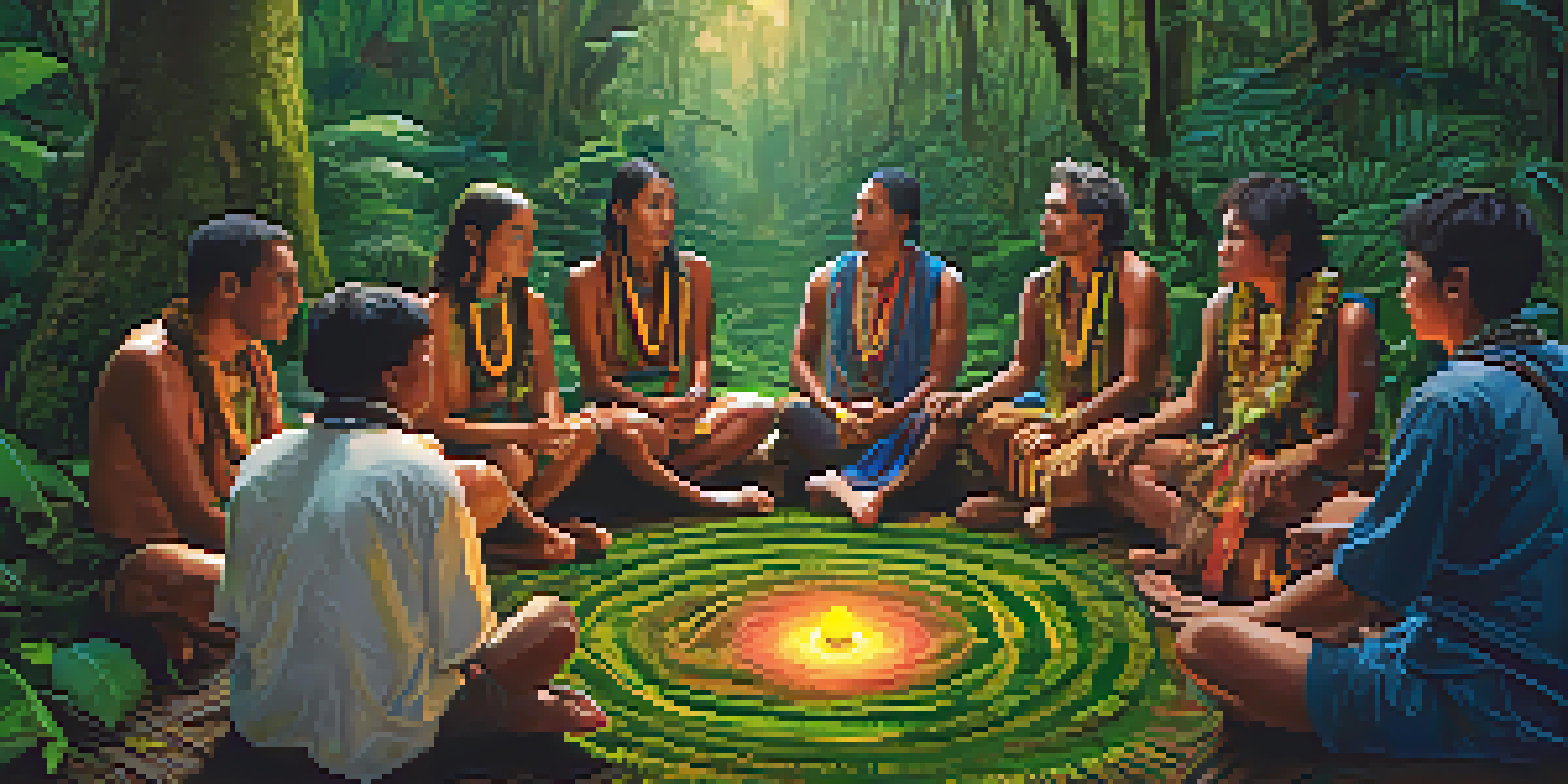Cultural Rituals Involving Ayahuasca vs. Shrooms in Healing

Understanding Ayahuasca and Its Cultural Significance
Ayahuasca is a powerful brew that originates from the Amazon rainforest, traditionally used by indigenous tribes for spiritual and healing purposes. This vine-based concoction contains DMT, a potent psychedelic compound that many believe opens the mind to deeper insights and connections. In these cultures, Ayahuasca ceremonies are often led by a shaman, who guides participants through their experiences, ensuring safety and spiritual integrity. The rituals are rich in tradition, incorporating songs, chants, and specific practices that have been passed down through generations.
The Role of Shrooms in Healing Across Cultures
Shrooms, or psilocybin mushrooms, have a long history of use in various cultures, particularly among indigenous peoples in Mesoamerica. Similar to Ayahuasca, these mushrooms are known for their psychoactive properties, which can lead to profound spiritual experiences and emotional healing. In modern times, there's been a resurgence of interest in shrooms for therapeutic purposes, as research highlights their potential in treating depression and anxiety. Many traditional ceremonies involving shrooms emphasize community and connection, creating a safe space for individuals to explore their inner selves.
Ayahuasca's Cultural Roots
Ayahuasca ceremonies are deeply rooted in indigenous traditions, emphasizing spiritual healing and community connection.
Comparative Healing Benefits of Ayahuasca and Shrooms
Both Ayahuasca and shrooms are touted for their therapeutic benefits, yet they offer different experiences. Ayahuasca journeys often involve intense emotional purging, which can lead to significant personal revelations and healing. On the other hand, shrooms typically provide a more euphoric experience, encouraging introspection and creative thinking. While both substances can lead to transformative experiences, the choice between them often depends on individual preferences and intended outcomes.
The Ceremony: Structure and Experience Differences
Ayahuasca ceremonies are usually structured and can last several hours, with participants sitting together in a sacred space. The shaman plays a crucial role in this experience, providing guidance and support as participants navigate their visions. In contrast, shroom ceremonies can vary widely in structure, ranging from intimate gatherings to larger group settings, and may involve less formal guidance. This difference in ceremony structure can significantly affect the overall experience and the depth of emotional work achieved.
Shrooms in Modern Therapy
Psilocybin mushrooms are increasingly integrated into contemporary therapeutic practices, highlighting their potential for mental health treatment.
Cultural Context: Ayahuasca and Indigenous Traditions
In indigenous cultures, Ayahuasca is deeply intertwined with spirituality and community. The rituals surrounding its use often address not just individual healing but also collective well-being, reinforcing social bonds and cultural identity. Participants are encouraged to share their experiences, fostering a sense of unity and belonging. This cultural context is essential, as it provides a framework for understanding the profound effects of Ayahuasca beyond just the individual.
Modern Adaptations: Integration of Shrooms in Therapy
As interest in psychedelics grows, shrooms have found their way into modern therapeutic practices. Many therapists now incorporate psilocybin into guided sessions, aiming to facilitate healing in a controlled environment. This adaptation reflects a broader cultural shift towards embracing natural substances for mental health treatment. The integration of shrooms into mainstream therapy highlights their potential benefits while also raising questions about the balance between traditional practices and modern science.
Healing Experiences Vary
While both Ayahuasca and shrooms offer transformative healing experiences, their effects and ceremonial structures differ significantly.
Potential Risks of Ayahuasca and Shrooms in Healing
While both Ayahuasca and shrooms have healing potential, they are not without risks. Ayahuasca can provoke intense emotional and physical reactions, which may be overwhelming for some individuals. Similarly, shrooms can lead to anxiety or distress if not taken in a safe, supportive environment. It’s essential for participants to be aware of these risks and to approach these experiences with caution, ideally under the guidance of experienced practitioners.
Personal Stories: Transformational Healing Journeys
Personal anecdotes from individuals who have undergone Ayahuasca or shroom ceremonies often highlight the transformative power of these experiences. Many report profound insights, emotional release, and a renewed sense of purpose after their journeys. These stories not only illustrate the healing potential of these rituals but also emphasize the importance of community support during the process. Such testimonials can inspire others to explore these paths while reminding them of the significance of preparation and intention.